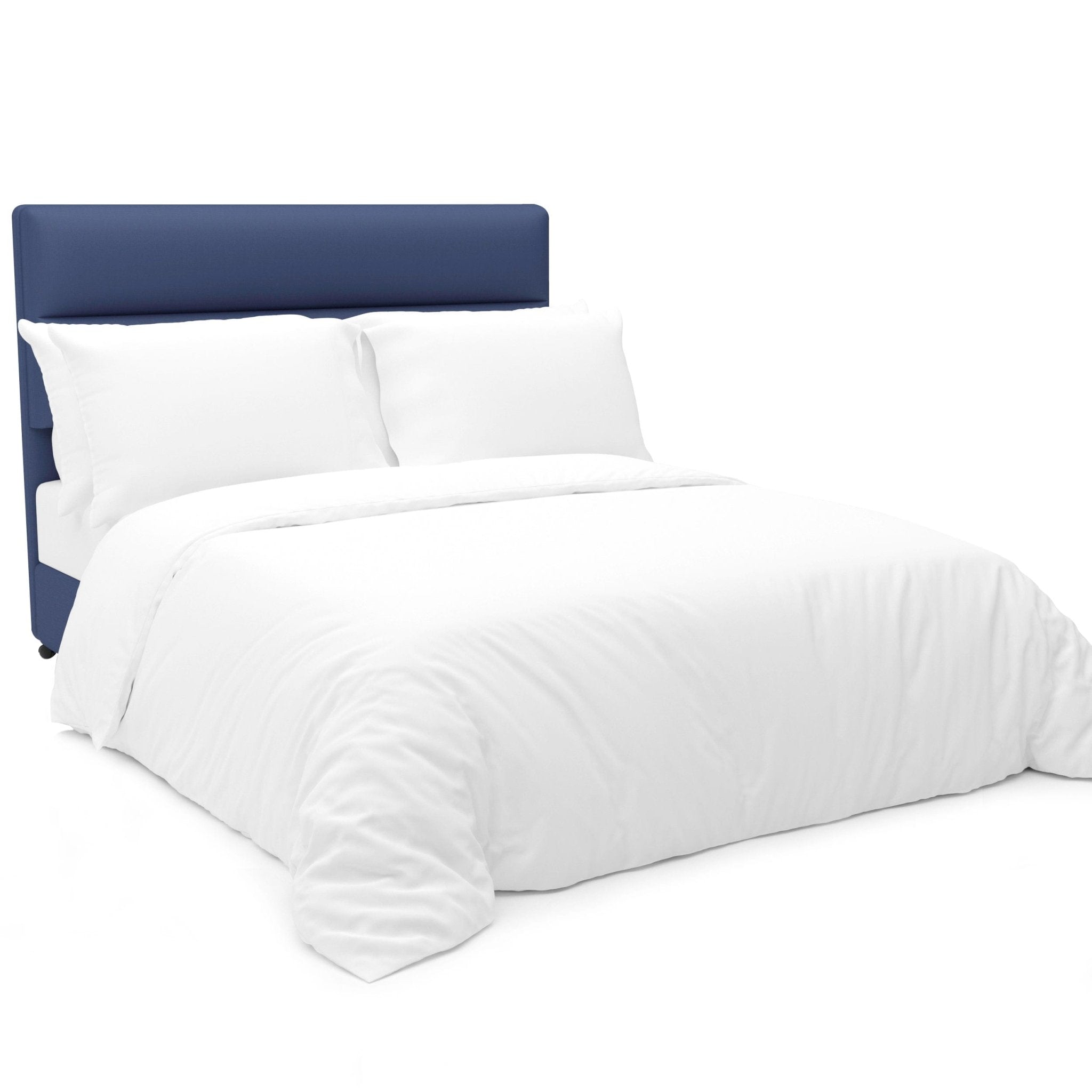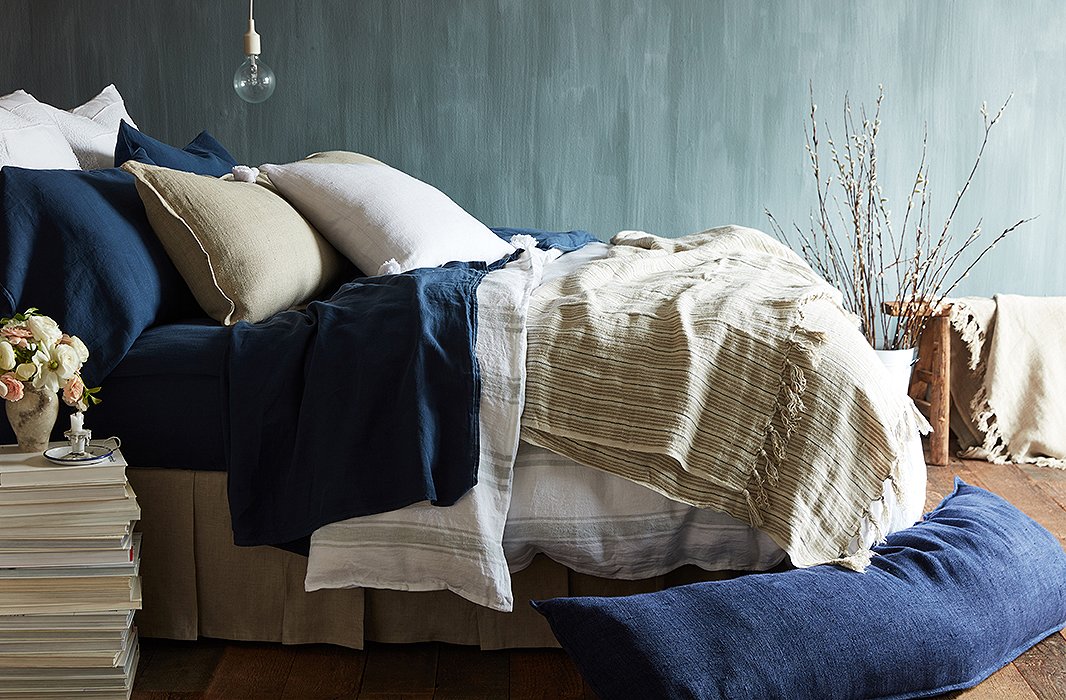Understanding Bed Linen: The Eco-Friendly Choice for Comfortable Living
When you consider green materials, bed linen commonly stands out for its one-of-a-kind top qualities. This natural fabric, made from the flax plant, uses both convenience and sustainability. Its impressive residential properties make it a perfect option for warm weather condition and lasting usage. What really sets linen apart from other materials? Understanding its advantages and origins can change how you check out home fabrics. Allow's check out the interesting world of bed linen further.
The Origins of Bed Linen: From Flax to Material

Bed linen, one of the earliest fabrics understood to mankind, has an interesting trip that begins with the modest flax plant. You could be amazed to discover that this plant prospers in amazing environments, flourishing in regions like Europe and parts of Asia. Once collected, the flax stalks undergo a process called retting, where they're soaked to divide the fibers from the woody components. After retting, the fibers are combed and rotated into thread, prepared for weaving.
When you see linen textile, you're seeing centuries of workmanship. Linen has actually been treasured for its all-natural look and really feel, making it a preferred for whatever from apparel to home textiles.
The One-of-a-kind Characteristic of Bed Linen
One of the standout attributes of this amazing material is its breathability. When you wear linen, you'll see how it allows air to flow, keeping you cool down on warm days. This home makes it a perfect option for summer season apparel and bedding.
Bed linen additionally boasts phenomenal moisture-wicking capabilities, drawing sweat away from your skin and enabling it to evaporate swiftly. You will not feel clammy, even in moist conditions. Furthermore, bed linen is durable, often ending up being softer and much more comfortable with each clean, which indicates it can stand the examination of time in your closet.
Another one-of-a-kind aspect is its natural structure; the mild abnormalities offer bed linen a personality that enhances your design. And also, it stands up to creases better than several other fabrics, so you can delight in a relaxed yet polished look without much effort. Accept bed linen, and you'll value its convenience and unique beauty.
Environmental Advantages of Linen
When you choose linen, you're not just deciding for a stunning textile; you're likewise supporting sustainable production practices. Bed linen's eco-friendly and compostable nature makes it a clever option for the atmosphere. Plus, it requires considerably much less water to generate compared to other fabrics, aiding save this valuable source.
Sustainable Production Practices
Although many textiles have substantial environmental effects, linen stands out as a result of its lasting production techniques. When you select linen, you're going with a textile made from the flax plant, which needs minimal water and chemicals. This durable plant can prosper in bad soil problems, decreasing the need for chemical plant foods. Furthermore, the entire flax plant is used in manufacturing, decreasing waste and advertising resource efficiency.
Linen production is usually less energy-intensive contrasted to various other fabrics, as it entails natural processes as opposed to synthetic treatments. By sustaining linen, you're adding to an extra sustainable fabric sector that prioritizes eco-friendly methods. Picking linen not only enhances your comfort yet also aligns your worths with ecological obligation.
Eco-friendly and Compostable Material
Bed linen's green nature prolongs past its lasting production; it's compostable and additionally biodegradable, making it an exceptional selection for environmentally mindful customers. When you select bed linen items, you're selecting materials that break down naturally, returning nutrients to the earth. This implies that at the end of their life process, your bed linen things will not add to land fill waste. Rather, they can break down safely, reducing your environmental impact. Moreover, composting bed linen can improve dirt, advertising healthy and balanced plant development. By including bed linen into your home, you're not just enjoying its comfort and sturdiness; you're additionally sustaining green techniques and aiding produce a healthier planet. Welcome bed linen, and really feel great about your choices for the environment.
Low Tide Usage
One of the standout advantages of bed linen is its low water intake throughout farming. Unlike cotton, which calls for significant watering, bed linen's flax plant thrives on very little water, making it an extra sustainable option. You'll appreciate recognizing that for each lots of linen generated, significantly less water is required contrasted to lots of other textiles. This means that selecting bed linen aids save vital freshwater sources, which is critical in today's climate. In addition, linen's all-natural drought resistance enables it to expand in less-than-ideal conditions, better decreasing its ecological impact. By selecting linen, you're not just purchasing quality; you're likewise sustaining a textile that promotes liable water usage and adds to a much healthier planet for future generations.
Linen vs. Other Fabrics: A Comparison
When you contrast bed linen to various other fabrics, you'll discover its remarkable breathability and convenience, making it excellent for warm weather. Plus, linen attracts attention for its resilience and durability, typically lasting longer than many commonly used materials. As you consider your choices, the environmental impact of each fabric will also play a necessary duty in your choice.
Breathability and Convenience
Bed linen stands out amongst materials for its amazing ability to permit air blood circulation. Unlike artificial fabrics, which can catch warmth and wetness, linen's all-natural fibers wick away sweat, keeping you completely dry and trendy.
Cotton is typically praised for its soft qualities, but it does not match linen's breathability. If you focus on comfort, specifically in summer, bed linen should be your best choice.
Durability and Long Life
While several textiles supply differing levels of longevity, bed linen absolutely succeeds in long life, making it a wise financial investment for your closet. Unlike cotton or artificial products that might use out rapidly, linen gets more powerful with each clean. You'll discover that linen's breathable nature also reduces wear from sweat and moisture, which can harm various other materials.
Environmental Effect Comparison
Although many textiles add to environmental issues, bed linen sticks out for its eco-friendly qualities. Unlike cotton, which calls for large water sources and chemicals, bed linen is made from flax, a plant that prospers on minimal water and requires fewer chemicals. This implies you can really feel great regarding your choice while lowering your carbon impact.
When compared to artificial fabrics like polyester, bed linen's biodegradability radiates. While polyester can take hundreds of years to decay, linen breaks down normally, returning nutrients to the soil.
Choosing bed linen not only advertises sustainable farming methods but additionally supports a much healthier world. By going with linen over conventional materials, you're making a conscious decision that profits both your comfort and the setting.
Caring for Your Bed Linen Textiles
To guarantee your linen fabrics continue to be in terrific problem, you'll desire to follow some simple treatment standards. Clean your linen in chilly water on a mild cycle to stop it from shrinking or losing its shape.
When it pertains to drying out, air drying out is best. Select a reduced warmth setup and get rid of the things while they're still slightly damp to minimize creases if you utilize a dryer. Iron the linen while it's still damp for simpler handling, or vapor it to maintain it looking crisp.
For storage space, maintain your bed linen in a cool, dry location. Prevent direct sunlight to stop fading. With these basic practices, your linen textiles will maintain their beauty and last for years, making them a sustainable enhancement to your way of living.
Incorporating Linen Into Your Home Design
Caring for your linen fabrics not just protects their high quality however also opens up a globe of opportunities for integrating them into your home décor. You can begin tiny by adding linen throw pillows to your couch, immediately elevating the room with appearance and warmth. Consider bed linen drapes that filter sunlight wonderfully, creating a soft, ventilated environment in any area.
For a more rustic appearance, try making use of linen table linens or runners throughout meals; they include a sophisticated touch and are easy to tidy. If you're feeling daring, mix and match different bed linen colors and patterns to develop a distinct, split effect.
Do not ignore linen blankets-- curtain one over a chair or your bed for an inviting feeling. By attentively integrating bed linen right into your design, you boost both comfort and style, making your home a calm resort.
The Future of Bed Linen in Sustainable Living
As consumers significantly prioritize sustainability, linen arises as a frontrunner in environment-friendly fabrics. Its production utilizes much less water and chemicals compared to traditional cotton, making it an extra environmentally accountable option. As you look in the direction of a sustainable future, integrating linen right into your closet and home can greatly minimize your carbon impact.
Cutting-edge brand names are now focusing on sustainable methods, from making use of natural flax to implementing circular economic climate concepts. You'll locate that bed linen's sturdiness suggests it lasts much longer, decreasing the need for regular substitutes.
Moreover, as more people embrace minimalist lifestyles, linen's timeless appeal and flexibility will keep it relevant. By choosing linen, you're not just selecting convenience; you're additionally sustaining lasting techniques.
In the upcoming years, the need for bed linen is anticipated to grow, solidifying its place in a more eco-conscious globe. Consider making linen a staple in your lasting living journey.
Frequently Asked Questions
Is Bed Linen Ideal for Individuals With Allergies?
Yes, linen's all-natural fibers are hypoallergenic, making it ideal for individuals with allergies. Its breathable nature helps in reducing dampness and germs accumulation, contributing to a much healthier resting atmosphere. You'll likely find it comfy and secure.
Can Linen Be Colored Quickly?
Yes, you can dye bed linen conveniently. Its natural fibers absorb dyes well, enabling for lively colors. Simply ensure you use the right color kind and adhere to proper methods to achieve the preferred results without harming the material.
Just How Does Bed Linen Contrast in Resilience to Cotton?

What Weight of Linen Is Best for Summer Season Apparel?
For summer season apparel, light-weight linen around 4 to 5 ounces per yard is ideal. It keeps you Linen amazing, breathable, and comfortable in heat (Linen Australia). You'll value exactly how it drapes and relocations with you easily

Can Linen Be Utilized for Outdoor Furniture?
Yes, you can utilize linen for outdoor furniture. It's breathable and durable, making it a fantastic selection for warm climate. Simply make sure to choose a treated version to hold up against the components and keep its appearance.
Conclusion
Integrating linen into your life not just improves your convenience however also supports an extra sustainable future. With its one-of-a-kind buildings and very little ecological impact, bed linen is a smart option for your home décor and way of living.
Linen's eco-friendly and compostable nature makes it a wise choice for the atmosphere. By including linen right into your home, you're not just appreciating its comfort and toughness; you're also assisting and sustaining environmentally friendly techniques create a healthier planet. The Future of Linen in Lasting Living.
